These 12 Design Portfolio Examples To Stand Out
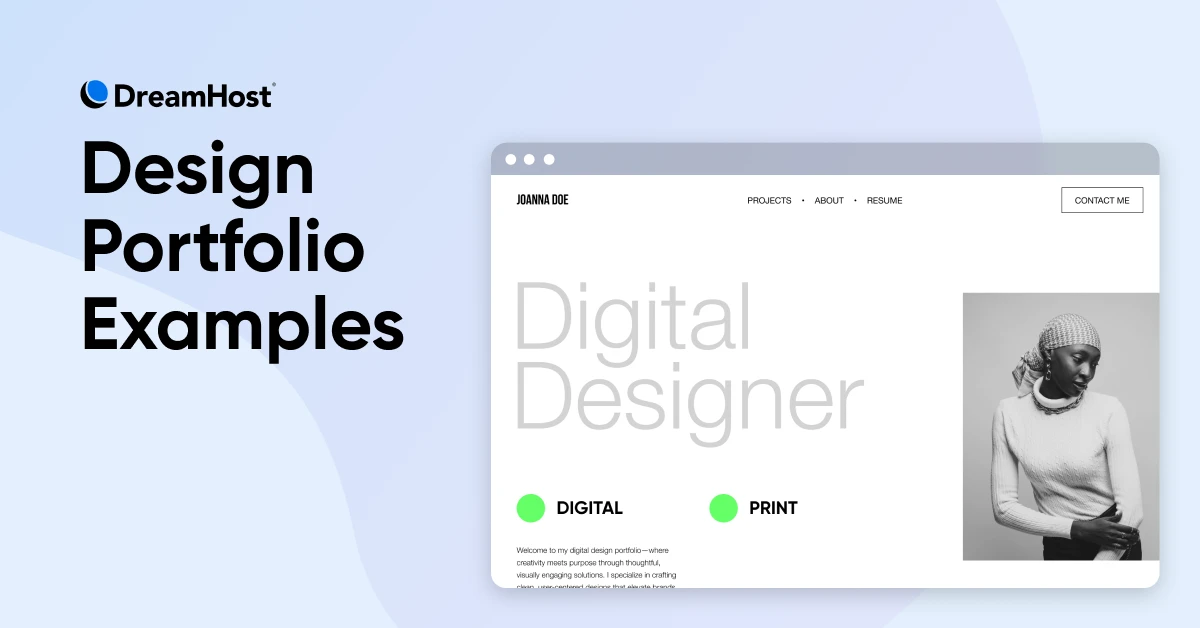
Newsflash: It’s not just full-time design pros who need portfolios.
If you create art in any way — graphic design, website or app design, digital product creation, and even art and goods — and you want to get it out into the world, you need a design portfolio.
Why?
A design portfolio showcases your skills, sets you apart from other designers, and helps build your personal brand. It’s a powerful tool to attract clients or employers by highlighting your unique style, past successes, and design process.
And as a bonus?
It gives you something physical you can show your grandma at Thanksgiving who still doesn’t quite understand what you do all day.
However, self-promotion is seldom simple. That’s where this guide comes in.
From cutting-edge inspo to core portfolio elements and tools of the trade, keep on scrolling for help showcasing your best work —no code required.
12 Examples of Creative, Effective Digital Design Portfolios
Whether you’re launching yourself into the world of design as a freelancing solopreneur, small agency founder, or even side-hustler, this collection of awesome sites we wrangled from around the web will help you gather inspiration for a portfolio that’s polished, but far from pedestrian.
Great Web Design Portfolios
If you design websites and other digital experiences, you know the field is crowded. These standout design portfolios broke through the noise for us. Follow their lead to create a similarly strong impression.
1. Christina Kosik
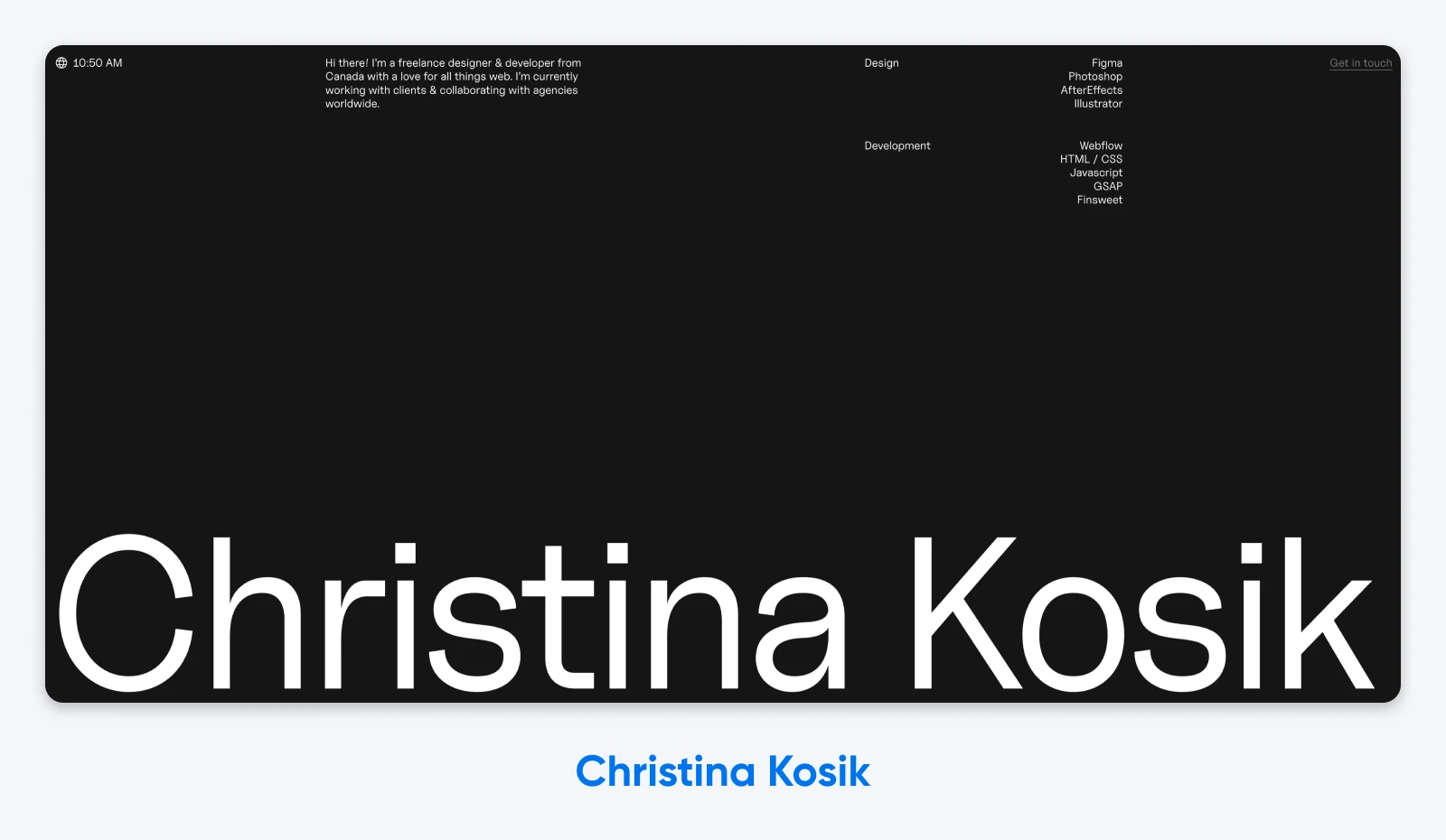
Why it works: Designer and developer Christina Kosik’s website is simple, minimal, and puts the most important information for clients upfront: her core competencies.

But of course, perhaps the second-most important element of a design portfolio —the work itself —is just a short scroll away.
2. Locomotive
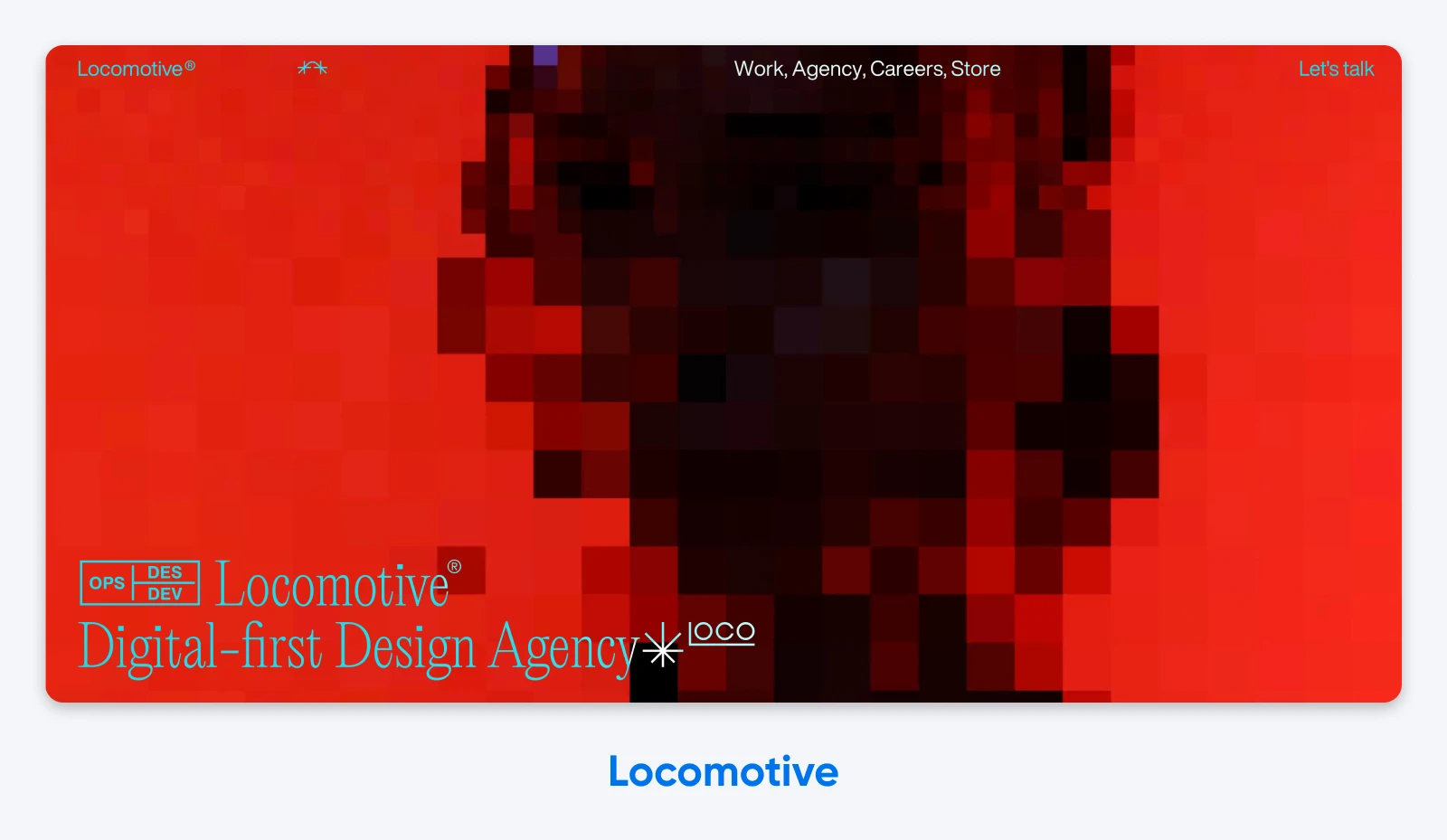
Why it works: On the flip side, we have Locomotive, a web-design agency that hits you with a colorful, flashy design right away. This design choice is effective as it immediately broadcasts their design beliefs and style. They go all-in on creative, innovative, and expressive experiences for their clients.
Powerful Brand Design Sites
Many creatives will tell you that you can’t be all things to all people. The following websites show how two very different branding specialists use their, well, branding as a “bat signal” of sorts to draw in their ideal client type.
3. RoAndCo
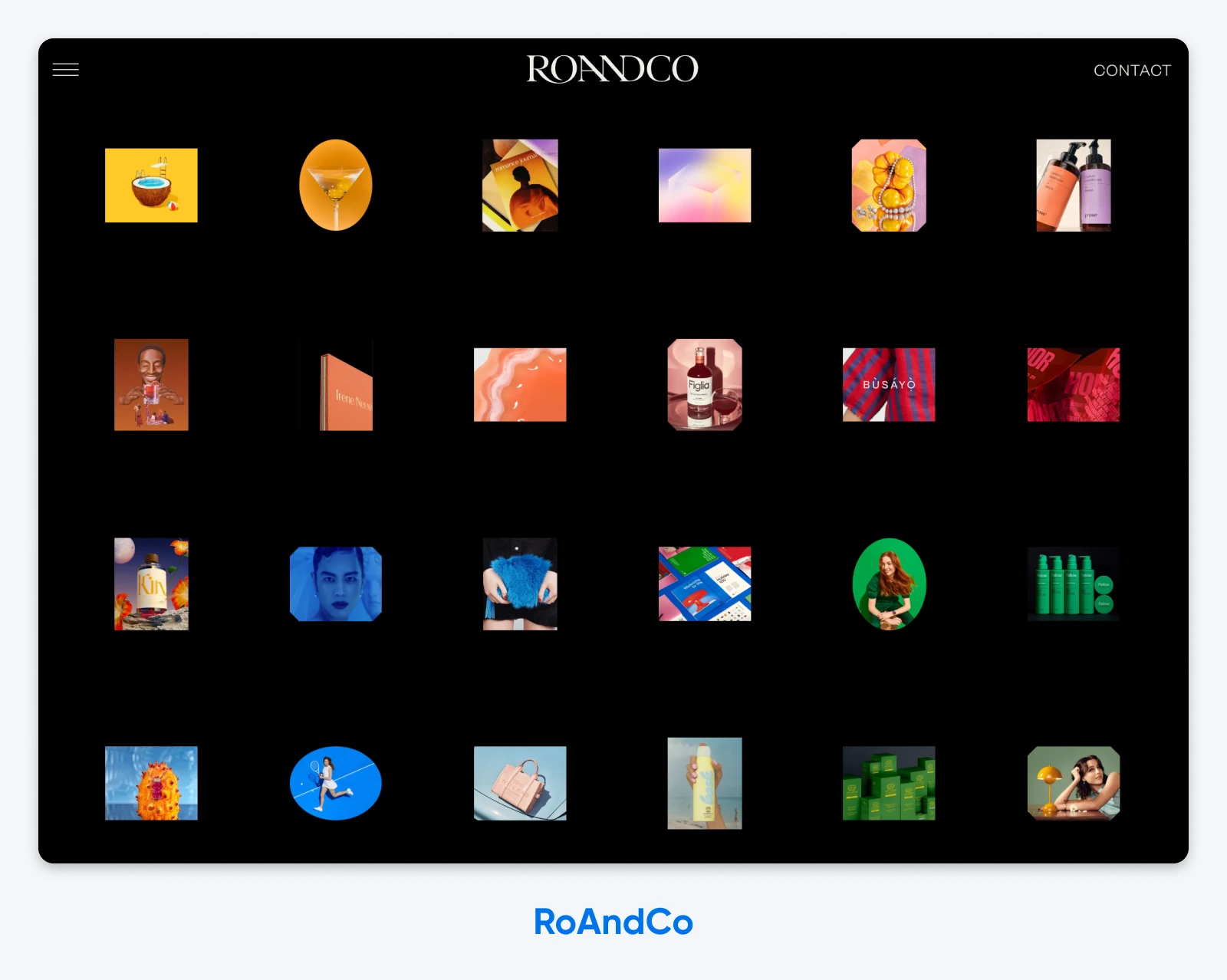
Why it works: The very first thing that RoAndCo’s portfolio design does is make their role, goal, and style immediately clear. They primarily work on product branding and lean heavily into bold colors. This doesn’t just make for a powerful showcase – it also subtly weeds out potential clients who know their own brand doesn’t align with the vibe.
4. RunWild

Why it works: The designer behind RunWild does something unique —they choose to tell, not show, the ethos behind their business. Their message is clear in big, bold type: They’re looking to revamp, boost, and build not just lasting brands but partnerships.
Imitation-Worthy Digital Product Design Portfolios
Digital product design is a unique beast, requiring designers to bring together elements of the online and physical worlds to cater to users who live in both. Here are a few product designers who nail the nuance.
5. Dan Machado
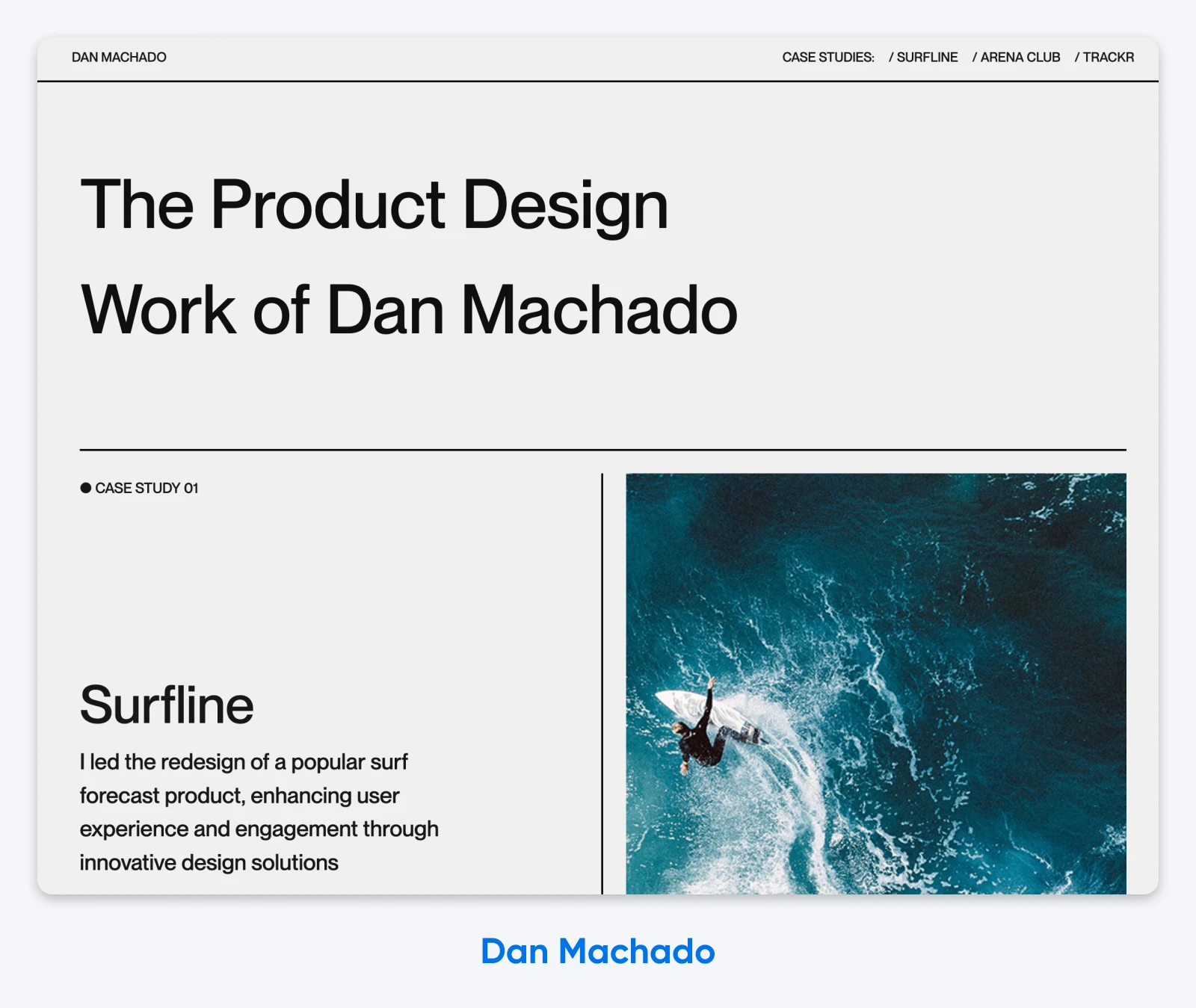
Why it works: Clear messaging, bold type, and case studies that kick off with a surfing product. We immediately know who California-based Dan Machado is as a person and product designer, thanks to the design and layout of his portfolio.
6. Florence Dairo
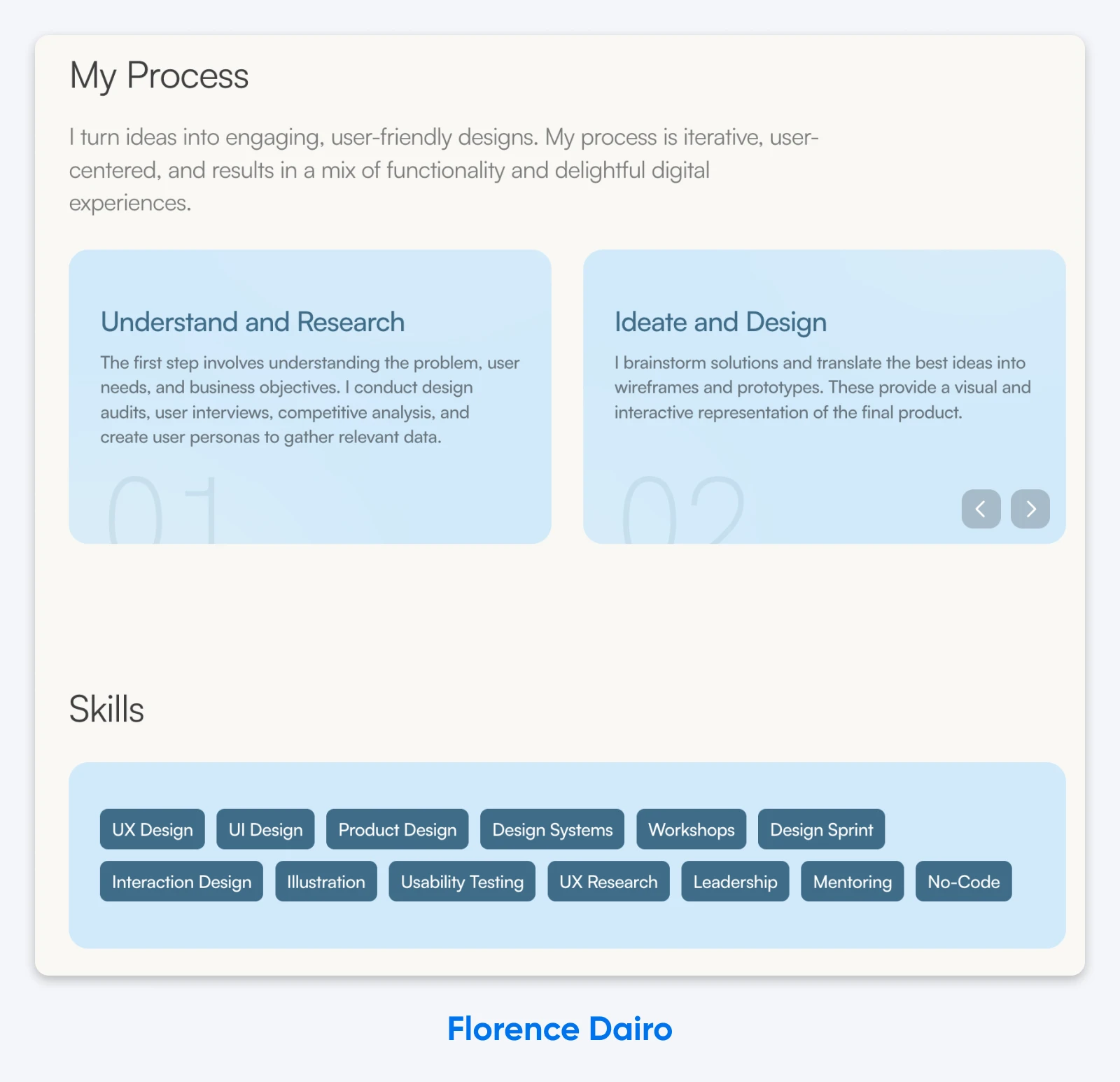
Why it works: With an impressive list of case studies followed by their process, skills, and an experience summary, Florence Dairo’s product design portfolio reads like a resume that leads visitors to a laser-focused call to action: getting in touch to collaborate.
Graphic Design Websites To Inspire
Graphic design is an expansive field, and these next few examples fully illustrate the different directions a creative could go to best show off a variety of graphic works.
7. Velvet Spectrum
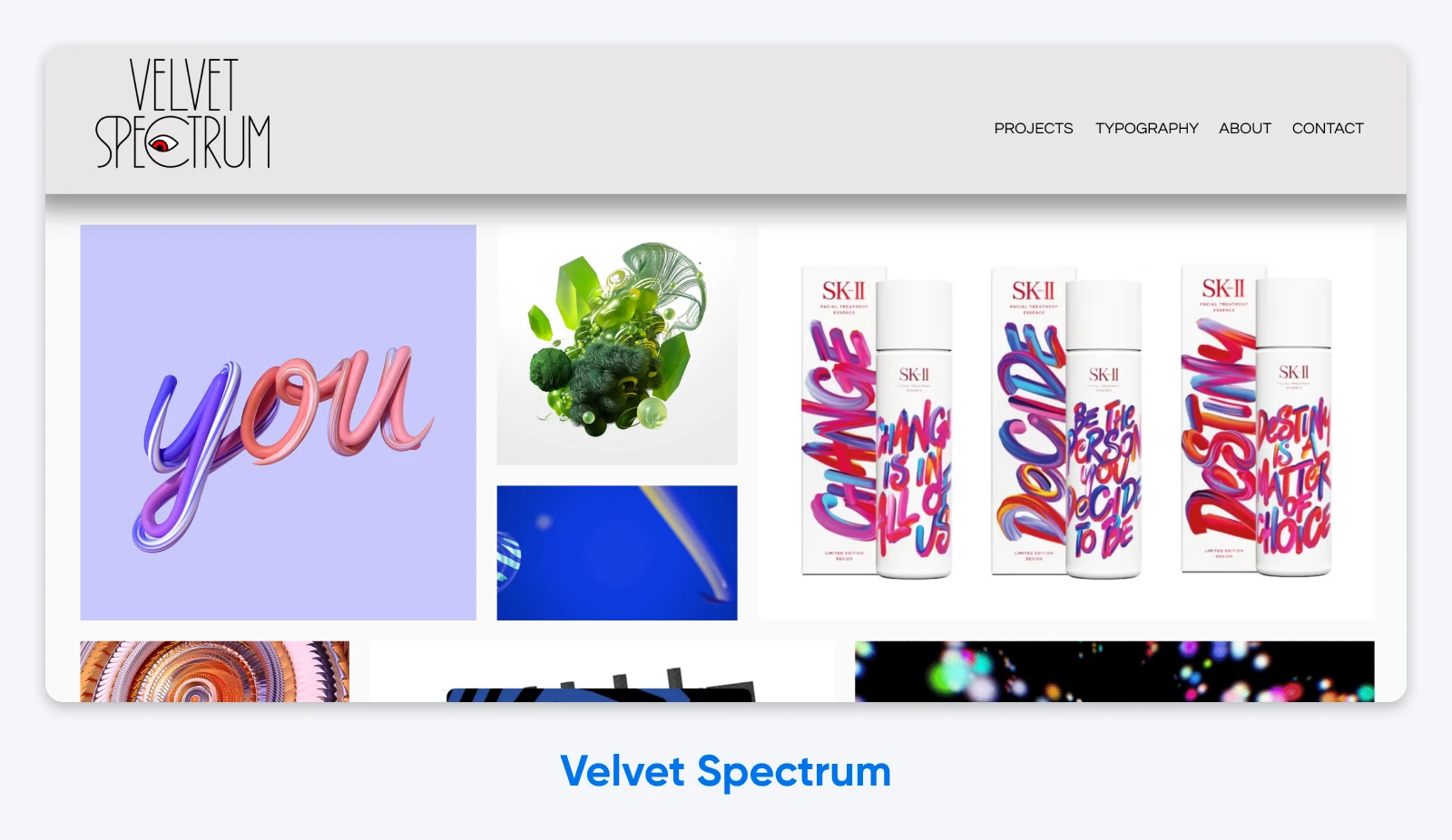
Why it works: With their online portfolio, Velvet Spectrum graphic designer Luke Choice lets their varied work speak for itself with a grid that mixes static images, 3D graphics, and animations to demonstrate a wide range of talents and skills.
8. Sophie Westfall
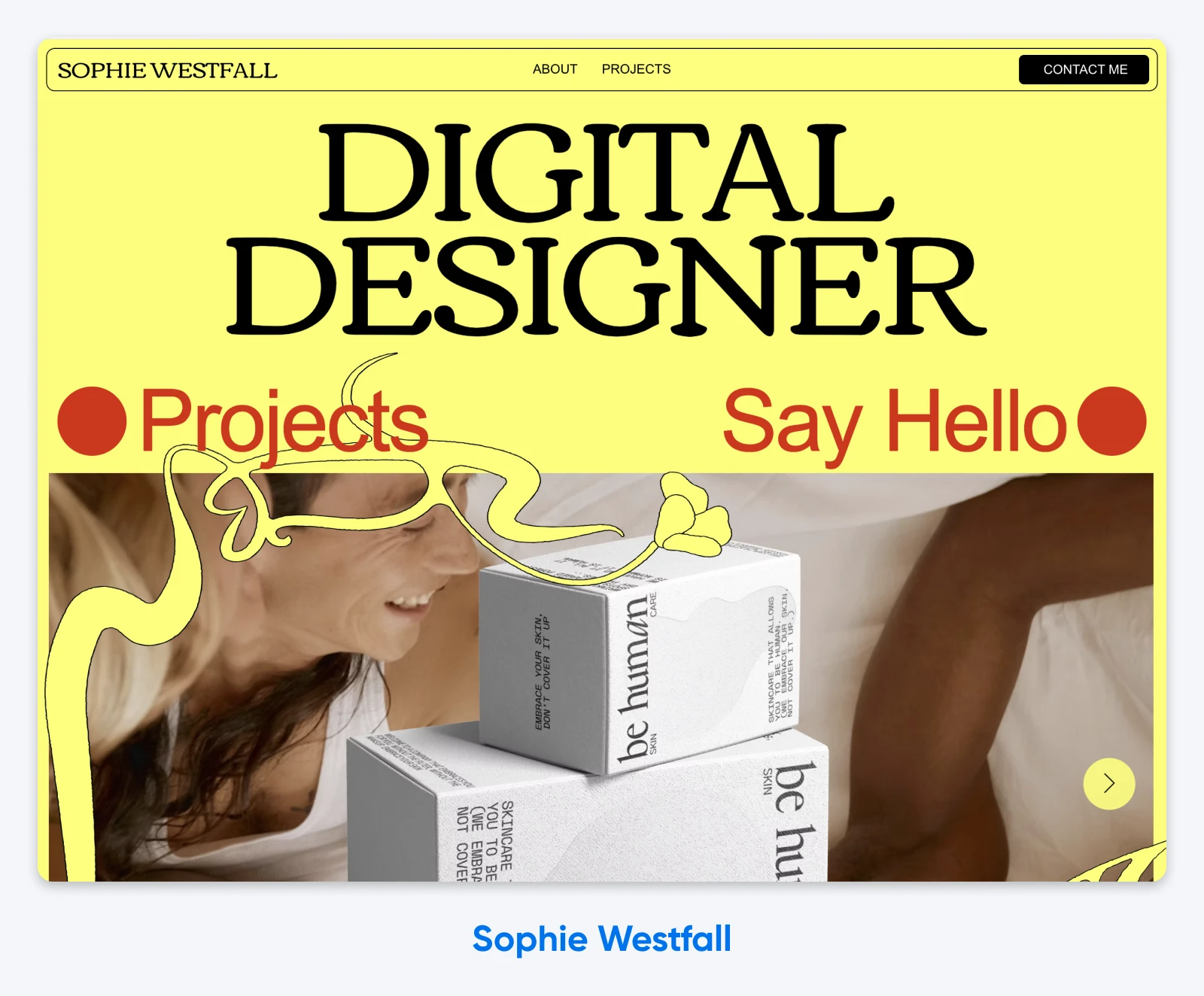
Why it works: With a graphic and bold design that includes a sneak peek of one of their projects and clear calls to action (CTAs), Sophie Westfall’s portfolio does an excellent job directing visitors where they should go next. Since graphic design can include so many areas of expertise, it’s easy for creatives to get lost showing off their work. Sophie’s website is a stellar example of giving potential clients clear next steps, from viewing the work to getting in touch.
Eye-Catching WordPress Design Sites
The DreamHost team has been writing about WordPress for a million years (give or take), so for our creative readers who are similarly obsessed, we wanted to include some inspiration-ready portfolios from a few folks who have made WordPress design work for them.
9. Websterville Design
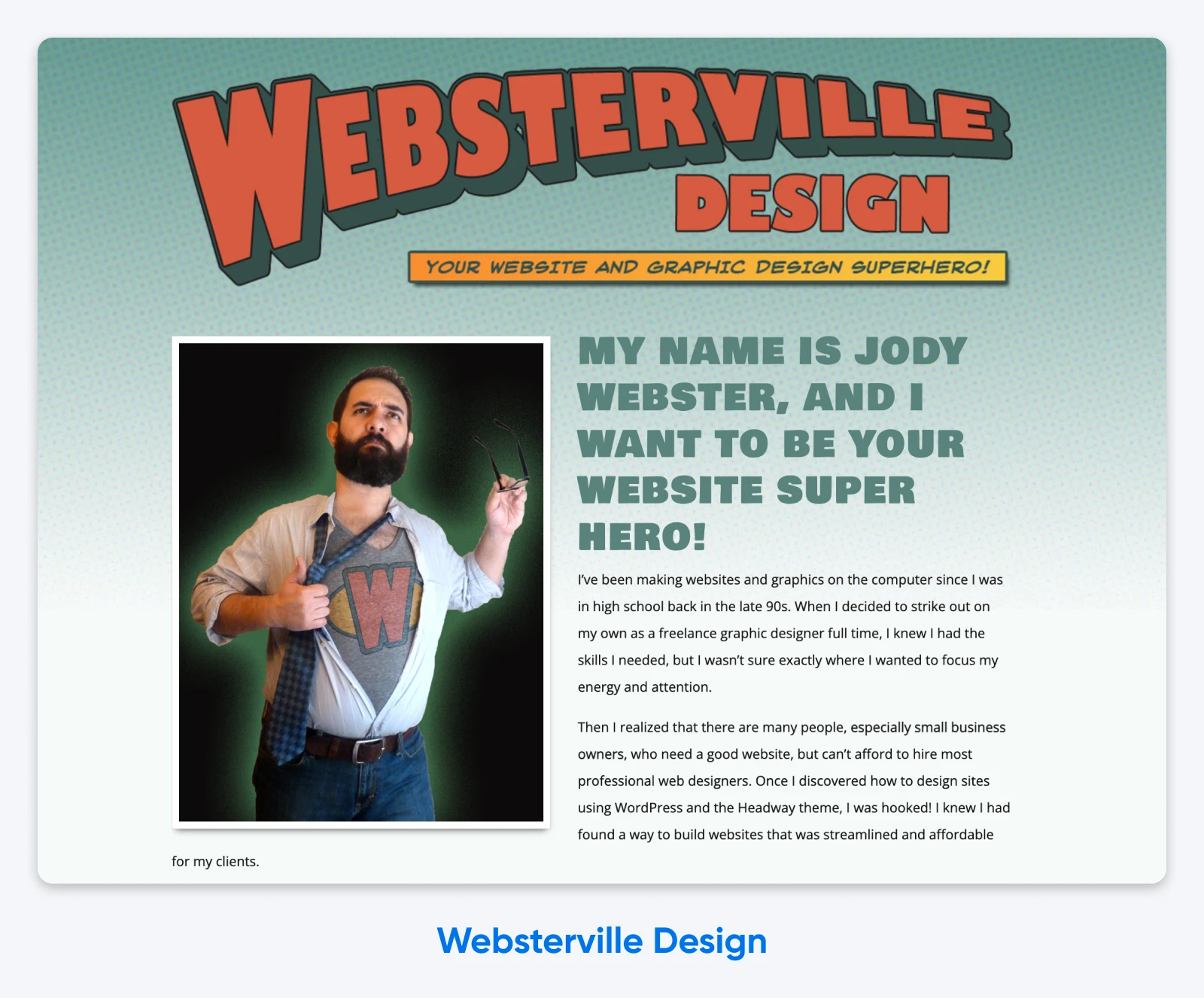
Why it works: Websterville Design pulls no punches when it comes to their niche. They’re here to provide super (pun intended!) approachable and affordable design for small businesses by making use of WordPress themes.
10. Good Cheer Tech Studio
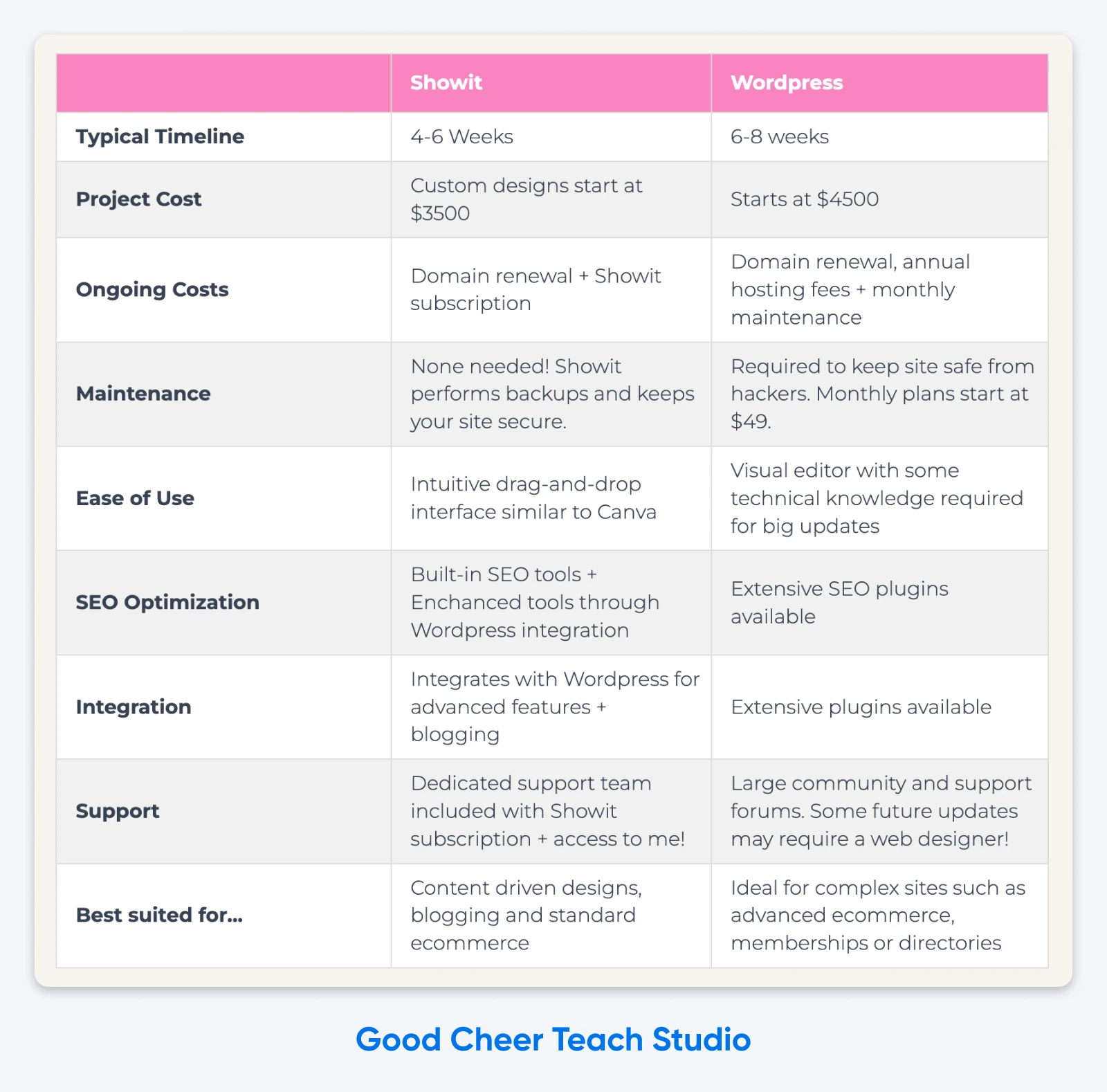
Why it works: Good Cheer Tech Studio knows that not everyone is looking for the most customized, powerful website on the planet. The studio smartly differentiates between their packages that offer WordPress versus other website-building platforms to help visitors choose their adventure. This informational guide not only treats potential clients like smart decision-makers, but it also creates trust and begins a conversation that will (hopefully) continue via the free discovery call on offer.
Creative Sites for Displaying Physical Designs
Packaging, jewelry, furniture, home decor, print goods, art you can touch and hold —there are tons of real-world designs that need representation in the digital world to get in front of a wider audience.
Let these design portfolios encourage you to get your creations online, even if your designs are physical ones.
11. Studio Signorella
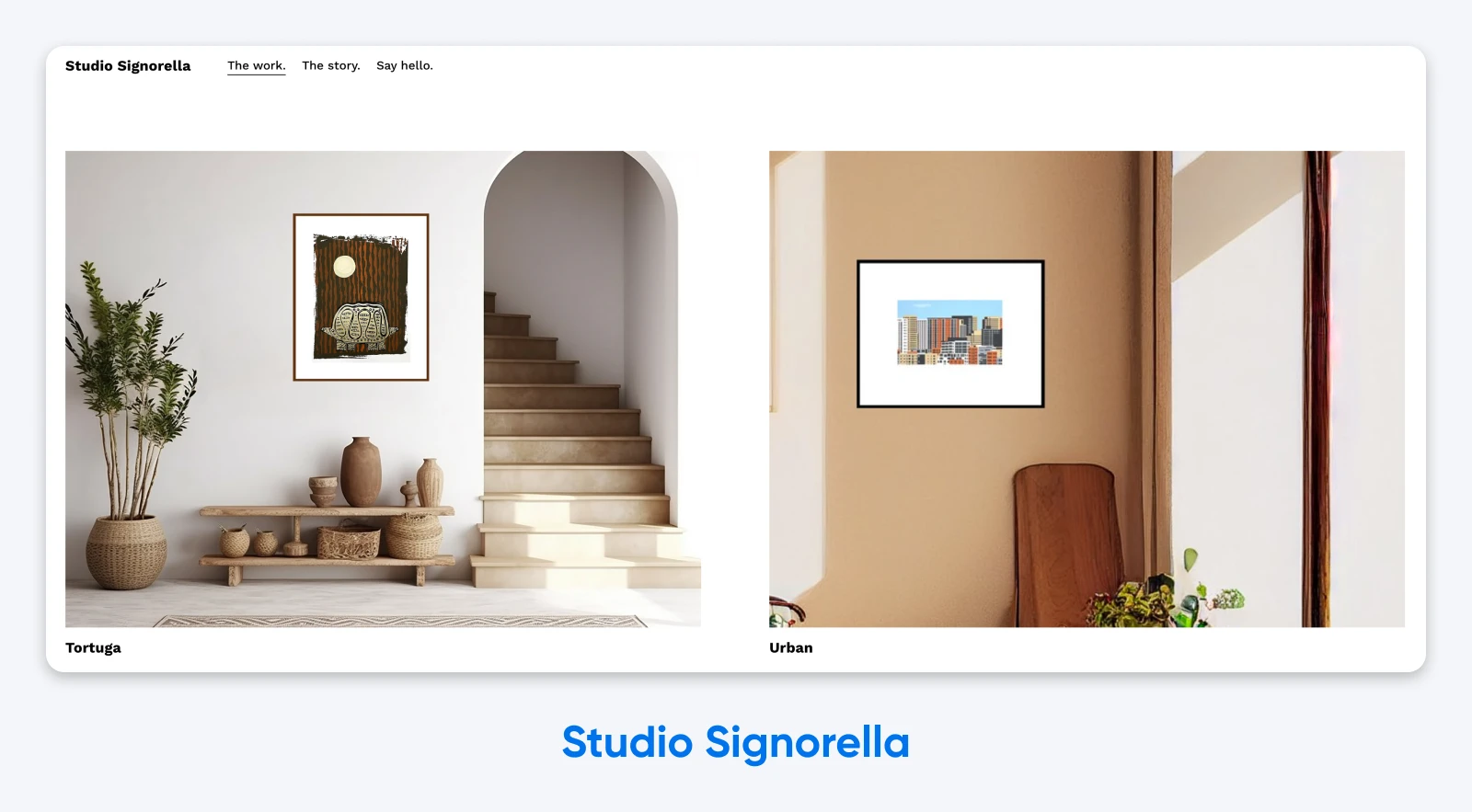
Why it works: Bright. Simple. Alluring. Studio Signorella’s portfolio perfectly reflects the style of their small-batch, handmade silkscreens,proving that the soul of your design doesn’t have to be left behind when you take it online.
12. Earth Fragments
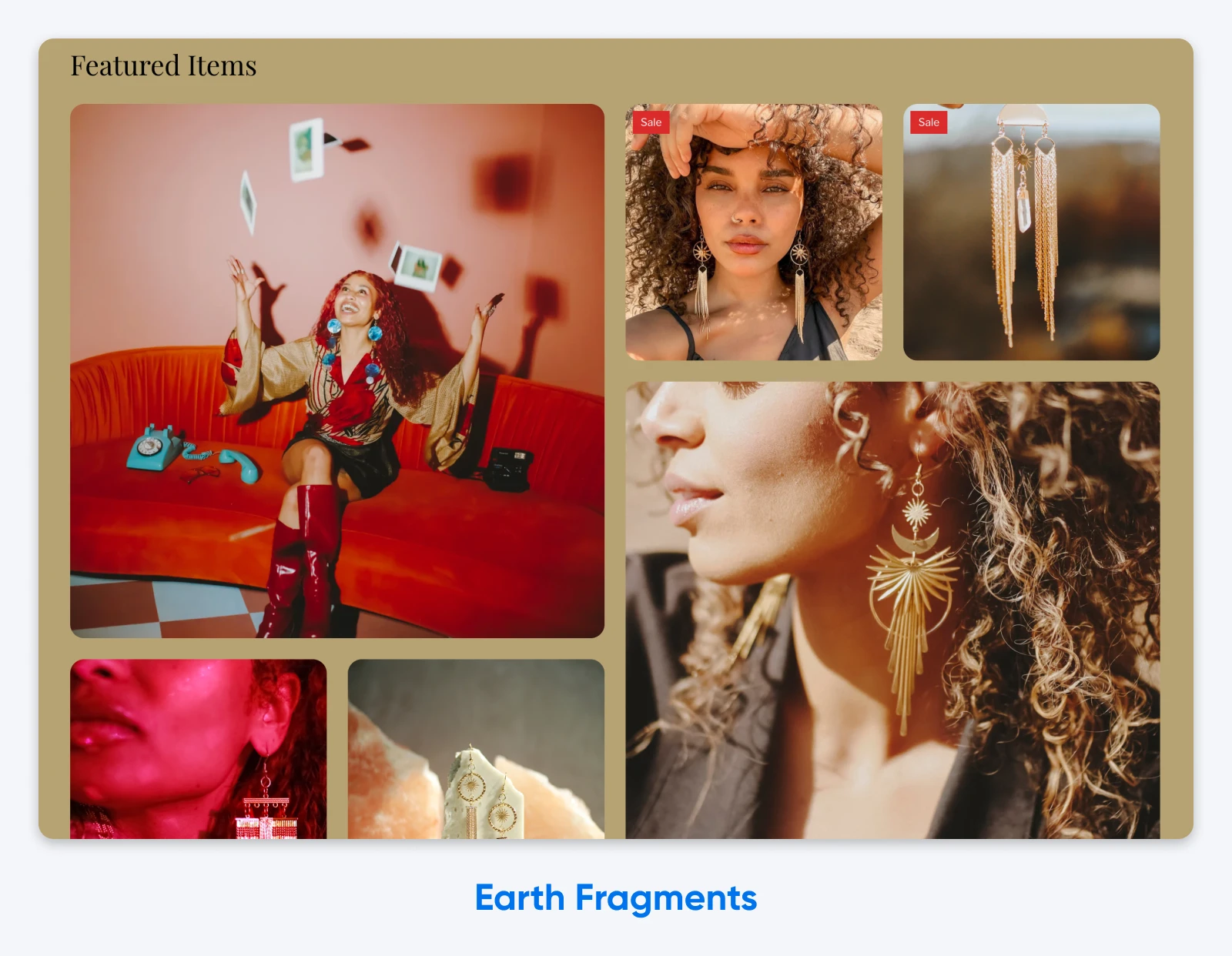
Why it works: The creator behind the Earth Fragments website is also a photographer, and it shows in the undeniably gorgeous photography of the products. This portfolio presents an excellent example of how creatives should find ways to bring their many skills together to make 3D design stand out even in a 2D space.
6 Key Elements Every Design Portfolio Should Have
Of course, a digital portfolio can’t just look great. When a potential customer, client, or employer lands on your website, here are some key things they’ll want to experience or be able to find easily.
- Rich work samples or case studies: Naturally, your portfolio should feature your work! But what about your work? We recommend a curated selection of your best projects with sharp shots or videos as well as context around their creation. If you’re in a field like product design, and case studies make more sense, remember that they should tell a story: the problem, the solution, and how you arrived at it. Focus on diversity of project and client types when you can.
- Interesting information about you: Creative work often requires a measure of understanding and intuition. Help potential collaborators know if they’ll gel with you by providing a glimpse of your background, design philosophy, and what types of work you love doing.
- Social proof/testimonials: Social proof silently signals to website visitors that they should work with you because all these other awesome people did (and loved their experience)! Tap into this psychological response by including logos of clients you’ve worked with, links to press mentions, awards you’ve won, and reviews from clients and collaborators that highlight your professionalism, creativity, and impact.
- Easy form of contact: Make it frictionless to get in touch and/or start working together. Consider a simple contact form, email address, and links to social media and any other portfolio platforms you want folks to check out (Dribbble, etc.).
- Personal branding: Make sure your overall site reflects the design identity you bring to projects. Use a consistent color scheme, typography, and even tone of voice.
- Usability: The experience of using your digital portfolio should feel modern and seamless. Prioritize clear and easy navigation (this is not the time to get creative), fast loading times, and mobile-friendly design.
You don’t need to be a web developer (or tech-savvy at all, really) to build a great portfolio site. With the right tools, you can launch your digital showroom quickly.
Image Optimization Tooling
We know you want to upload those full-size, crisp, pro-level photos of your design to your website. However, optimize your images first.
This is because a digital portfolio should look great and load as quickly as possible. Large image files are one of the main things that can slow your website down, and that can ding your chances of being found in a search (for example, Google ranks slower sites lower) and affect the user experience once people do find your portfolio.
To get your images portfolio ready, we recommend Squoosh.app. Here’s how to use it.
Domain Checker
Next up, think about what you want to call your portfolio site — aka, choosing your domain name. Your domain name is that part right before the “.com” (or whatever extension you choose) that identifies your site.
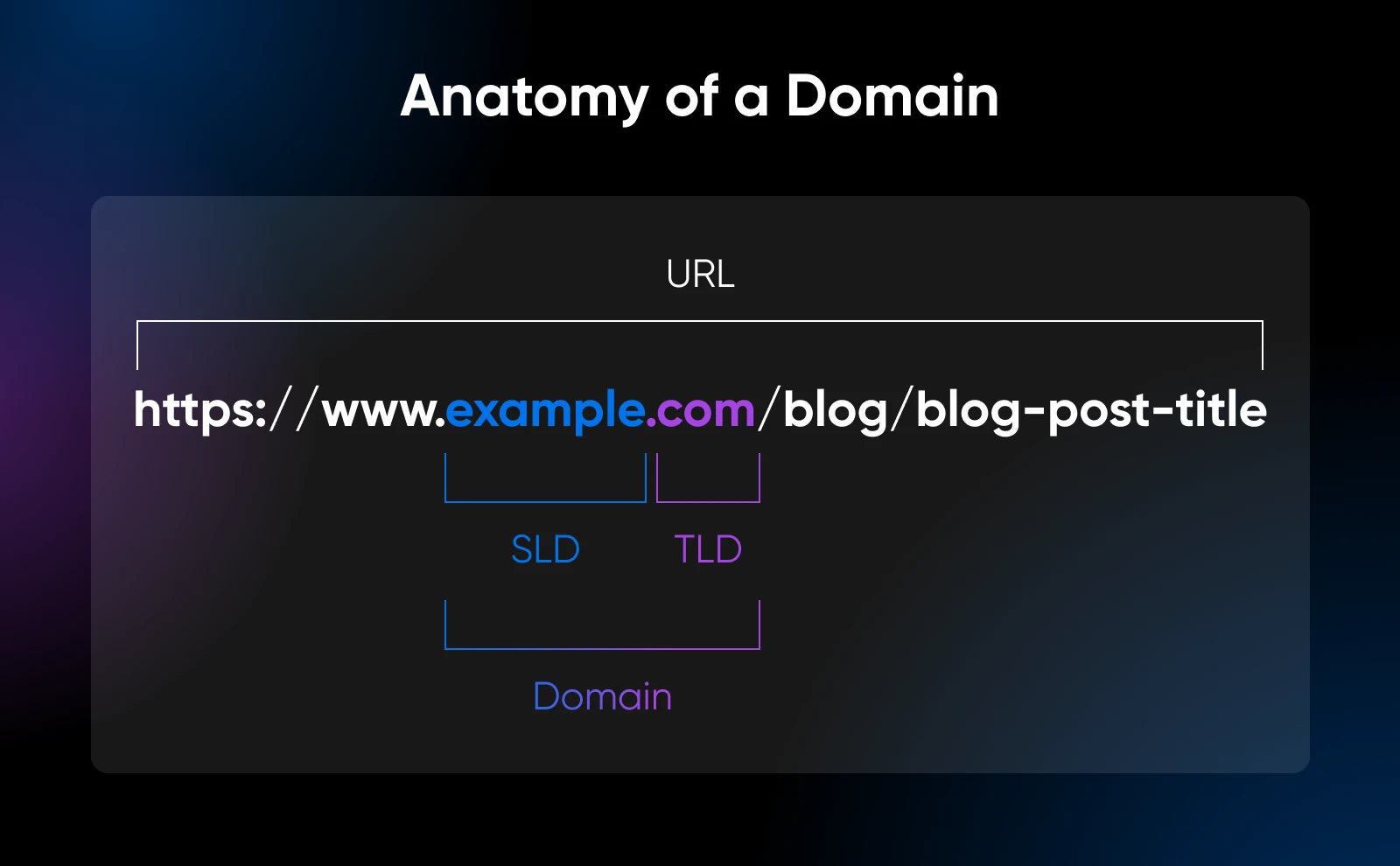
There’s a lot to consider when choosing the right domain name: how it represents you and your art, how findable it is for searchers, how easy it is to spell, and so on.
For help coming up with a domain that’s a little more creative than just your own name, try our business name generator to get a fresh perspective. Then, head over to our domain checker to see what’s available, and secure an affordable option before it’s gone.
Wireframe Creator
Now we finally get to start thinking about what this thing is going to look like!
This step is optional, but we usually like to do some kind of wireframe (or light sketch, or full-scale mockup, depending on how detailed you want to get!) to get our design ideas out of our heads.
If you haven’t built a website before and/or you tend to be a perfectionist, we definitely recommend this step to help keep you on track so you don’t take years to hit publish on your new portfolio.

Paper and pencil, a whiteboard, or even a matrix of Post-it Notes on your office wall are all fine ways to start. That said, if you want to get digital, wireframe.cc is easy for beginners, Canva’s templates and pre-designed elements do a lot of the heavy lifting for you, and Uizard uses AI to turn sketches into high-fidelity design!
Website Builder (With Hosting)
It’s time to bring the whole thing to life.
There are practically endless tools when it comes to website building, but we’re partial to one of the original platforms in the game: WordPress.
The process of building a self-hosted WordPress site for your portfolio is detailed, but it’s worth it when it comes to its customization and power. If you’re intrigued by this option and want to try your hand at it, don’t miss our detailed walkthrough for launching your first site.
Looking for something quicker? Our AI-powered Liftoff website builder can take you from blank slate to full-fledged portfolio in minutes.
No time or desire to get into the nitty-gritty yourself? The pro services team at DreamHost also offers up beautiful, from-scratch websites customized to all your needs and wants.
Oh, and don’t worry, however you choose to work with DreamHost, a hosting solution is always included.
Building your design portfolio site doesn’t need to be overwhelming! Focus on the essentials, use the right tools, and remember that done is better than perfect.

WordPress Hosting
Launch Your Website with DreamPress
Our automatic updates and strong security defenses take server management off your hands so you can focus on creating a great website.
Check Out Plans



